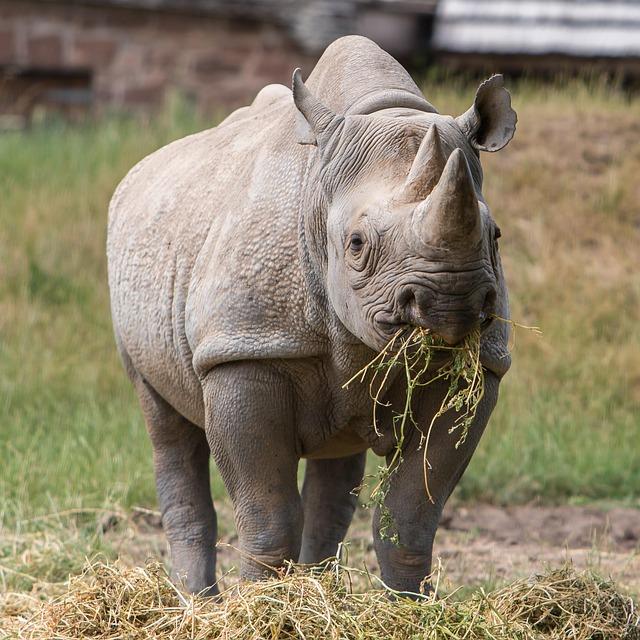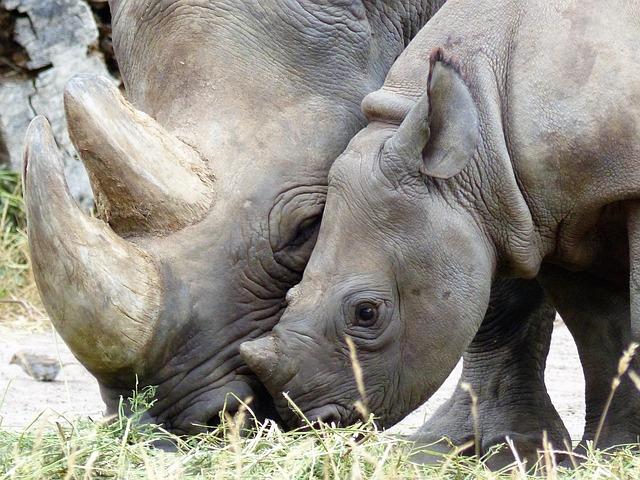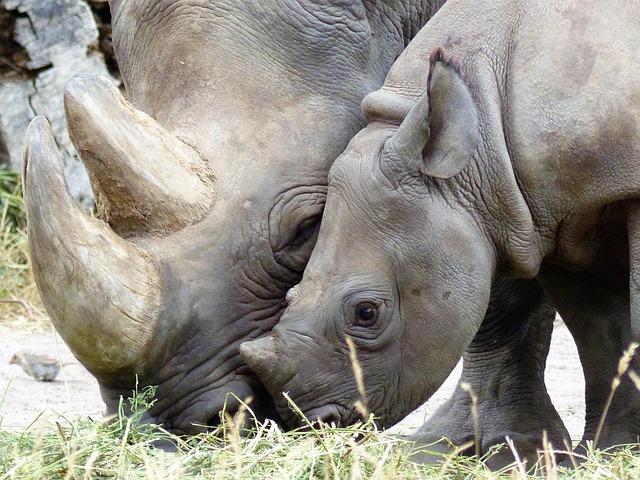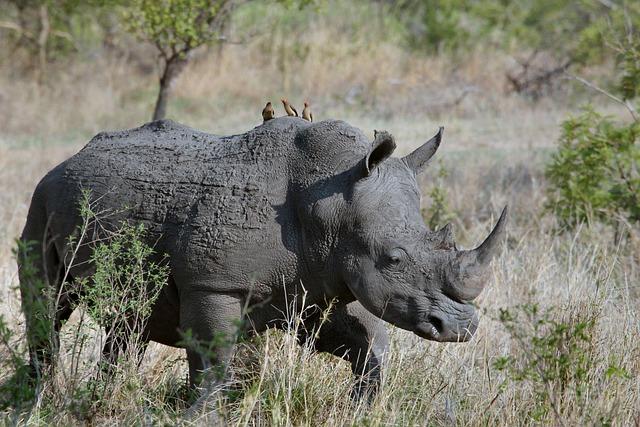- Introduction
- New Arrival: Baby Black Rhino Born at the Zoo
- Conservation Efforts Surrounding Black Rhinos
- Why This Birth is a Win for the Species
- Public Reception and Next Steps at the Zoo
- Conclusion
- FAQs
- References
Introduction
A rare and joyful event has taken place with the birth of a baby black rhinoceros at a zoological institution. This milestone offers a beacon of hope for a species that remains critically endangered in the wild. In this article, we explore the significance of this birth—not only as a cute new addition to the zoo but also as a vital step in conservation. We’ll look at what makes this newborn special, how conservationists are working to protect black rhinos, why reproduction in captivity is critical, and how the public is embracing this event.
This blog will walk you through the details of the rhino calf's arrival, the broader implications for rhino conservation, the challenges underlying species survival, and the community’s response to this little ambassador of hope. We'll also share useful resources and address some frequently asked questions about black rhinos in captivity.
New Arrival: Baby Black Rhino Born at the Zoo

(Image: Pixabay/@garethdoc)
A healthy black rhino calf made its long-awaited debut at a major metropolitan zoo last week. The calf, born to a 12-year-old mother on a specially designed habitat site, is under the attentive care of zookeepers and veterinary staff. According to zoo officials, both mother and baby are doing well and have begun short periods of outdoor exploration outside the public’s immediate view.
The birth was part of an ongoing Species Survival Plan (SSP), a coordinated effort among accredited zoos to ensure the genetic diversity and future viability of endangered species in human care. Black rhinos, also known as Diceros bicornis, are notoriously challenging to breed in captivity due to their solitary nature and specific mating behaviors. Zookeepers followed months of close monitoring and behavioral observation to determine the right time for pairing.
Weighing roughly 80 pounds at birth, the yet-to-be-named calf has shown strong early signs of health, including nursing regularly and responding well to environmental enrichment. Zoo officials anticipate the public will be able to view the rhino within the next few weeks as part of a soft introduction process to ensure minimal stress for both animals.
Conservation Efforts Surrounding Black Rhinos

(Image: Pixabay/@OpenClipart-Vectors)
Black rhinos are listed as critically endangered by the IUCN Red List, with fewer than 5,500 individuals remaining in the wild primarily across Africa. Major threats include poaching for their horns, which are falsely believed to have medicinal properties, and loss of habitat due to agricultural expansion and conflict zones.
Zoos play an increasingly important role in the global conservation strategy through captive breeding, public education, and fundraising for field programs. Programs like the SSP contribute to maintaining a viable ex-situ population that serves as a safety net against extinction. Additionally, these facilities act as research hubs that improve our understanding of rhino biology and health management needs.
Outside the walls of zoos, wildlife organizations and governments collaborate on anti-poaching patrols, habitat restoration, and community-based conservation models that engage local residents in meaningful stewardship roles. The integration of in-situ (on site) and ex-situ (captive) efforts helps build a more robust framework for rhino recovery.
Why This Birth is a Win for the Species

(Image: Pixabay/@Mani300)
The successful birth of a black rhino calf is not just a cause for local celebration; it also represents a broader achievement in species preservation. With every individual born, particularly under managed care, comes a chance to boost genetic diversity and strengthen breeding lines. Genetic diversity is vital in ensuring that populations remain resilient against disease outbreaks and environmental changes.
Captive births can also serve as educational ambassadors that foster public commitment to biodiversity. Visitors who connect emotionally with a visible rhino calf are more likely to care deeply about conservation issues affecting Africa's endangered rhino populations. This emotional investment can translate into financial support, advocacy, and greater awareness.
Moreover, tracking the health and growth metrics of newborn rhinos in zoos provides researchers with valuable data that can assist field conservation efforts. Insights into gestation, maternal behavior, and juvenile development all contribute toward refining strategies meant to help restore wild populations.
Public Reception and Next Steps at the Zoo

(Image: Pixabay/@Mani300)
The announcement of the baby black rhino's arrival quickly gained traction among media outlets and local visitors. Many are eagerly awaiting the chance to witness the young rhino firsthand. While access to the new calf is currently limited, plans are underway for a formal introduction celebration which may include naming contests and family-friendly educational exhibits.
Zoo officials stress that their priority remains the well-being of the calf and its mother. Gradual acclimation to their exhibit area will be monitored closely by animal care professionals. Safety protocols are in place to ensure that visitor excitement does not disturb the animals during this important developmental period.
Educational signage and interactive exhibits are being updated to capitalize on this momentous event. The goal is to use the attention around the birth to promote awareness regarding the threats faced by black rhinos and how individuals can support global preservation efforts, such as donating to anti-poaching campaigns or adopting a rhino through verified nonprofit programs.
Conclusion
The debut of a baby black rhino represents more than an endearing addition to a zoo; it’s a symbol of resilience and a tangible step forward in efforts to conserve one of the world’s most endangered species. As zoological organizations continue refining captive breeding practices and supporting wild populations, events like this help maintain momentum and public engagement in crucial conservation work.
While challenges remain in reversing years of population decline due to poaching and habitat degradation, each new calf renews hope. It offers scientists and educators an opportunity to inspire and garner support, ensuring future generations may continue witnessing these powerful creatures in both wild and protected environments.
FAQs
What species of rhino was born?
The baby is a black rhinoceros (Diceros bicornis), a critically endangered species native to parts of Africa.
Why is the birth of a rhino in captivity significant?
It helps maintain genetic diversity and acts as a safeguard population while supporting broader conservation and education goals.
When can the public see the baby rhino?
The zoo is planning phased introductions with public viewing expected within a few weeks, depending on the animal’s adaptation process.
What can I do to help/save black rhinos?
You can support conservation organizations, avoid products linked to poaching, and educate others about wildlife preservation. Many zoos also offer adoption and donation programs.
Are there any risks to breeding rhinos in captivity?
Yes, such as behavioral incompatibility and health complications. It requires skilled management and long-term planning to ensure success.

